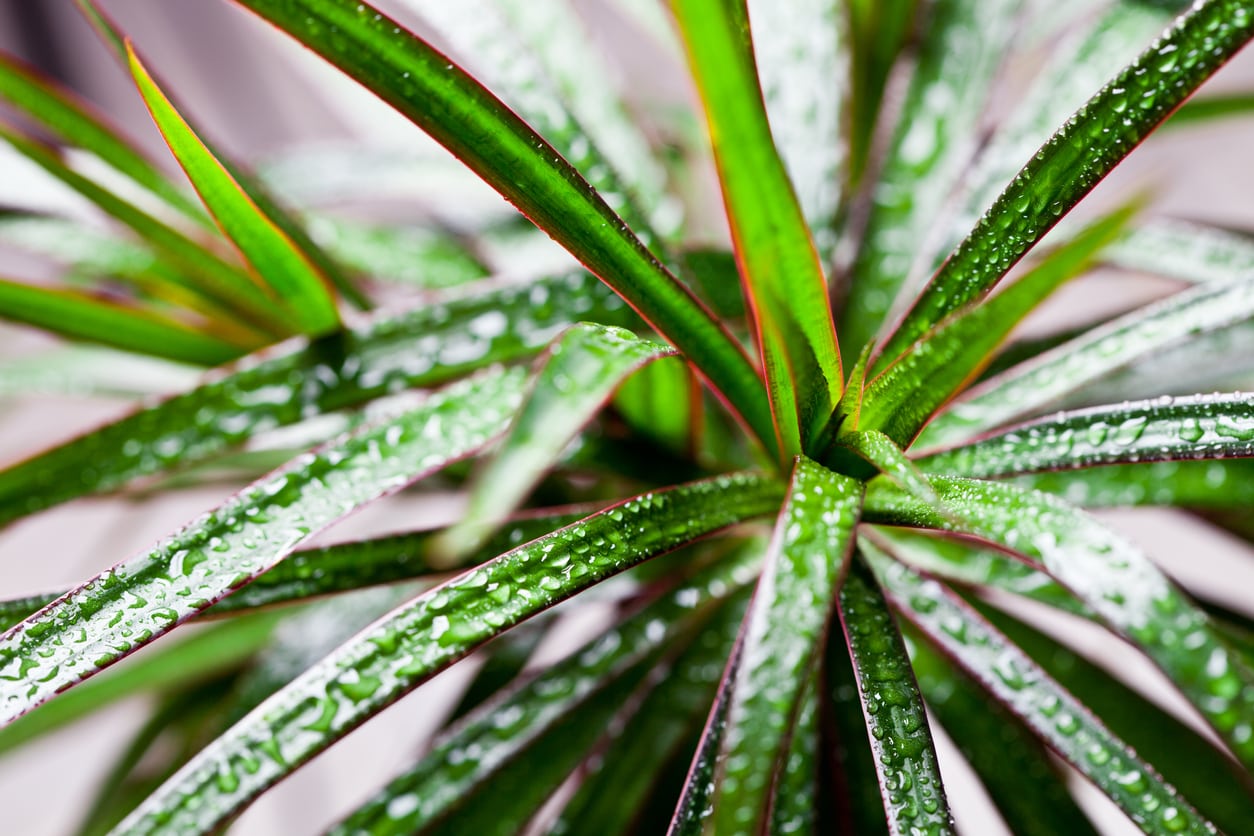Dragon Tree Plant Care – Tips On Growing A Dracaena Dragon Tree


The Madagascar dragon tree is a fantastic container plant that has earned a rightful place in many temperate climate homes and tropical gardens. Keep reading to learn more about dragon tree plant care and how to grow a red-edged dracaena plant.
Dracaena Marginata Info
Dracaena is a genus of about 120 different species that come in a wide range of shapes and sizes. One of the most popular species is the Dracaena marginata, also frequently called dragon tree, Madagascar dragon tree, and red-edged dracaena. This last name is the most evident in its appearance, as it produces very long, variegated leaves that are green in the center and red on both sides. Dragon trees are hardy in USDA zones 10b and above, which means that most gardeners have to keep them in pots that come inside during the winter. This is no problem, however, as the trees are extremely well suited to container life and indoor climates. In fact, they are some of the most popular houseplants out there.
Dragon Tree Plant Care
In nature, a dragon tree will grow to about 15 feet (4.5 m.). It’s unlikely to reach that kind of height in a container, but that’s just as well, since the whole point of keeping it potted is to be able to bring it indoors! A Madagascar dragon tree is remarkably tough, with a strong root system, which means it can handle being potted and repotted. They require little feeding and will thrive with just a regular slow release fertilizer once in the spring and once again in the summer. They do best when temperatures are between 65 and 80 F. (18-27 C.) This is ideal, as it is the temperature most homes are kept. They will survive lower temperatures, but their growth will slow down severely. The best light is bright and indirect, and watering should be frequent. Fluoride can cause leaf discoloration, so it’s best to use non-fluoridated water.
Gardening tips, videos, info and more delivered right to your inbox!
Sign up for the Gardening Know How newsletter today and receive a free copy of our e-book "How to Grow Delicious Tomatoes".

The only child of a horticulturist and an English teacher, Liz Baessler was destined to become a gardening editor. She has been with Gardening Know how since 2015, and a Senior Editor since 2020. She holds a BA in English from Brandeis University and an MA in English from the University of Geneva, Switzerland. After years of gardening in containers and community garden plots, she finally has a backyard of her own, which she is systematically filling with vegetables and flowers.
-
 Looking For Plants To Give You The Soft And Fuzzies? Try These 5 Fuzzy Leaf Plant Options
Looking For Plants To Give You The Soft And Fuzzies? Try These 5 Fuzzy Leaf Plant OptionsLovers of texture, drama, silver foliage and tactile plants will adore these special sensory garden additions. These fuzzy leaf plant options will leave you all aglow
By Susan Albert
-
 Get Ready For A Summer Of Hummers! Grow These Full Sun Hummingbird Plants and Flowers
Get Ready For A Summer Of Hummers! Grow These Full Sun Hummingbird Plants and FlowersIf you’re lucky enough to enjoy a sunny backyard, make sure you are maxing out on your pollinator opportunities and grow these full sun hummingbird plants and flowers
By Tonya Barnett